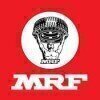


i
Brakes
India
Work with us
![]()
Filter interviews by
Brakes India Design Engineer Interview Questions and Answers
Brakes India Design Engineer Interview Experiences
3 interviews found
I applied via Naukri.com and was interviewed before Oct 2023. There were 3 interview rounds.
(2 Questions)
- Q1. Explain Free body Diagram ?
- Ans.
Free body diagram is a visual representation of all the forces acting on an object in a given situation.
It shows all the forces acting on an object as vectors, with arrows indicating the direction and magnitude of each force.
The object of interest is represented as a point or a simple shape, with all external forces acting on it shown around it.
Internal forces within the object are not shown on a free body diagram.
Free...
- Q2. What is the working principle of a brake system ?
(2 Questions)
- Q1. What is Stack up tolerance ?
- Q2. What is the difference between cylindricity and roundness in GD&T ?
- Ans.
Cylindricity refers to the overall 3D form of a cylinder, while roundness refers to the deviation of a circle from a perfect circle.
Cylindricity is a 3D tolerance that controls the overall form of a cylinder, ensuring that all points on the surface lie within a specified tolerance zone.
Roundness is a 2D tolerance that controls the deviation of a circle from a perfect circle, ensuring that the entire circle lies within ...
(2 Questions)
- Q1. Create 3d model for the given engineering drawing ?
- Ans.
To create a 3D model from an engineering drawing, use CAD software to accurately replicate the dimensions and features.
Use CAD software such as AutoCAD, SolidWorks, or Fusion 360 to create the 3D model.
Refer to the engineering drawing for dimensions, angles, and features to accurately replicate in the 3D model.
Utilize tools within the CAD software to create extrusions, cuts, fillets, and other features as needed.
Check ...
- Q2. Do drafting for the given 3d model ?
- Ans.
Yes, I can create detailed 2D drawings based on the 3D model provided.
Create orthographic views (top, front, side) of the 3D model
Include dimensions, annotations, and tolerances in the drawings
Generate section views to show internal features
Add surface finish symbols and notes as needed
Interview Preparation Tips
- Strength of materials
I applied via Naukri.com and was interviewed in Aug 2022. There were 2 interview rounds.

(2 Questions)
- Q1. As usual tell us about you.
- Ans. My answer is very straight. I told about my educational background, then my former work nature.
- Q2. Most questions were about the previous experience
- Ans. Mostly about the Engg. Drawings, basic GD&T.
Interview Preparation Tips
- Engineering Drawing
- GD&T
- Stackup
- Strength of materials
All the best.

(1 Question)
- Q1. In this round , the interviewer are asked questions from what we are learning in college.
(1 Question)
- Q1. About ourselves and communication skills
Interview Preparation Tips
Top trending discussions






Interview questions from similar companies

I applied via Walk-in and was interviewed before Feb 2021. There were 2 interview rounds.

(2 Questions)
- Q1. Depends on experience
- Q2. Related to systematic approach
- Ans. Problem solving tools, OEE, FPY, Root cause analysis. 14Q, 5S
Interview Preparation Tips

Interview Questionnaire
1 Question
- Q1. Where do you see yourself in 5 years?
- Ans.
In 5 years, I see myself as a senior design engineer leading a team of designers and working on innovative projects.
Leading a team of designers
Working on innovative projects
Continuing to learn and develop my skills
Contributing to the growth and success of the company
Building strong relationships with clients and colleagues
Interview Preparation Tips
Experience: The initial short-listing was based on an online technical test lasting 1.5 hours.
Tips: Study in detail about Pumps, Compressors, Distillation.
Duration: 150 minutes
Round: Group Discussion
Experience: There was also a Group Discussion Round in which a one page problem statement was given to solve.It had 10 members. It was not an eliminative round.
Tips: Group discussion with friends on recent happenings helps in preparing for the GD.
Duration: 10 minutes
Round: Technical Interview
Experience: There were two interviews of 30 minutes each.
General Engineering. Not a very technical interview.
Tips: Prepare for technical interview and quant.
Round: HR Interview
Experience: HR round had normal set of HR questions.
Tips: Watch YouTube videos on HR interviews.
General Tips: Focus on topics like HT, FM, MT, CRE, Process Control .
College Name: IIT Madras

I applied via Naukri.com and was interviewed in Dec 2020. There were 3 interview rounds.
Interview Questionnaire
1 Question
- Q1. Core Java, J2EE
Interview Preparation Tips

Senior Engineer Interview Questions & Answers
Samvardhana Motherson Groupposted on 1 Jun 2020
I applied via Naukri.com and was interviewed in May 2020. There were 4 interview rounds.
Interview Questionnaire
3 Questions
- Q1. What are the die casting and machining defects?
- Ans.
Die casting and machining defects are common in manufacturing processes.
Die casting defects include porosity, shrinkage, cold shuts, and flash.
Machining defects include burrs, chatter marks, and tool marks.
Die casting defects can be caused by improper temperature, pressure, or metal flow.
Machining defects can be caused by dull tools, improper speeds and feeds, or poor fixturing.
Defects can lead to part failure, reduced...
- Q2. What is the formula of filling and high speed ratio?
- Ans.
Filling and high speed ratio formula is used to calculate the filling time of a container with a specific volume of liquid at a given flow rate.
Filling and high speed ratio formula is V/Q
V is the volume of the container and Q is the flow rate of the liquid
The formula is used to determine the time it takes to fill a container with a specific volume of liquid at a given flow rate
The higher the flow rate, the faster the c...
- Q3. Why do u want to join Motherson?
Interview Preparation Tips

I applied via Naukri.com and was interviewed before Aug 2020. There were 3 interview rounds.
Interview Questionnaire
2 Questions
- Q1. Technical questions related to your field,Software knowledge on which your working
- Q2. Brief introduction about the company that your attending interview
Interview Preparation Tips

Senior Engineer Interview Questions & Answers
Samvardhana Motherson Groupposted on 19 Jan 2021
I appeared for an interview in Jul 2020.
Interview Questionnaire
1 Question
- Q1. Waht is your achievements
- Ans.
I have achieved several milestones throughout my career as a Senior Engineer.
Successfully led a team of engineers to develop and implement a new software system, resulting in a 20% increase in efficiency.
Received recognition for designing and implementing a cost-effective solution that reduced production downtime by 30%.
Contributed to the development of a groundbreaking technology that revolutionized the industry, lead...
Interview Preparation Tips

(1 Question)
- Q1. Harness based questions
Brakes India Interview FAQs
Tell us how to improve this page.
Brakes India Interviews By Designations
- Brakes India Production Engineer Interview Questions
- Brakes India Graduate Engineer Trainee (Get) Interview Questions
- Brakes India Junior Engineer Interview Questions
- Brakes India Design Engineer Interview Questions
- Brakes India Trainee Interview Questions
- Brakes India Senior Engineer Interview Questions
- Brakes India Factory Medical Officer Interview Questions
- Brakes India Assistant Technician Interview Questions
- Show more
Interview Questions for Popular Designations
Overall Interview Experience Rating
based on 2 interview experiences
Difficulty level
Duration
Design Engineer Interview Questions from Similar Companies
Brakes India Design Engineer Reviews and Ratings
based on 17 reviews
Rating in categories
|
Engineer
260
salaries
| ₹4 L/yr - ₹9.5 L/yr |
|
Trainee
259
salaries
| ₹1.1 L/yr - ₹3 L/yr |
|
Junior Engineer
201
salaries
| ₹1.8 L/yr - ₹5 L/yr |
|
Senior Engineer
159
salaries
| ₹5.9 L/yr - ₹11.5 L/yr |
|
Deputy Engineer
147
salaries
| ₹3.8 L/yr - ₹7.7 L/yr |

Bosch

Samvardhana Motherson Group

MRF Tyres

UNO Minda
- Home >
- Interviews >
- Brakes India Interview Questions











